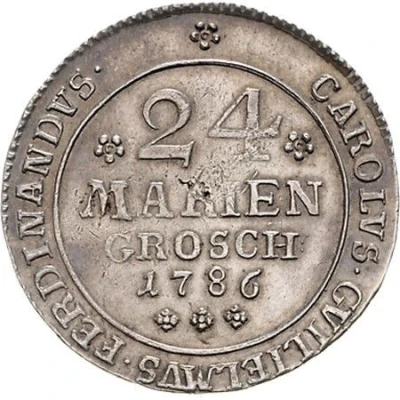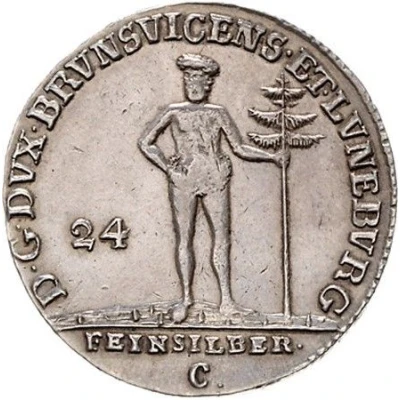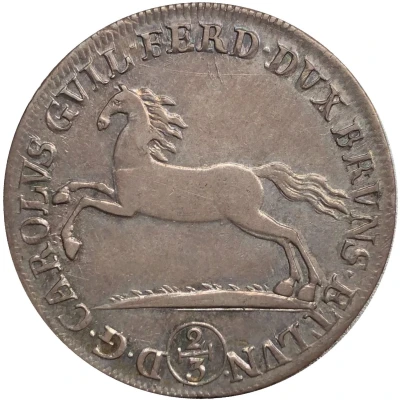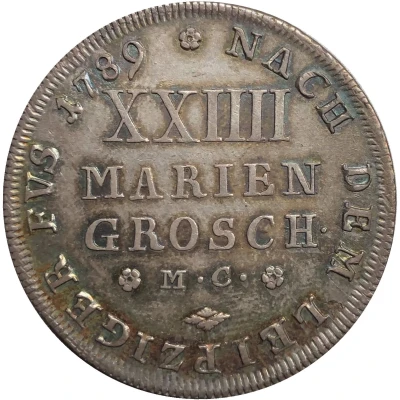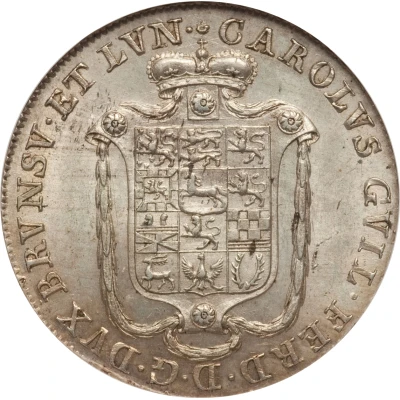


© Heritage Auctions
16 Gute Groschen - Charles William Ferdinand
| Silver | 13.9 g | 32 mm |
| Issuer | Principality of Brunswick-Wolfenbüttel (German States) |
|---|---|
| Prince | Charles II William Ferdinand (Karl II Wilhelm Ferdinand) (1780-1806) |
| Type | Standard circulation coin |
| Years | 1784-1805 |
| Value | 16 Gute Groschens (⅔) |
| Currency | Thaler (1499-1814) |
| Composition | Silver |
| Weight | 13.9 g |
| Diameter | 32 mm |
| Thickness | 2.1 mm |
| Shape | Round |
| Technique | Milled |
| Orientation | Medal alignment ↑↑ |
| Demonetized | Yes |
| Updated | 2024-10-05 |
| Numista | N#27130 |
|---|---|
| Rarity index | 77% |
Reverse
Value und date in center, surrounded by inscription
Script: Latin
Lettering:
XVI GUTE GROSCH.1786
M.C.
XX EINE FEINE MARK CONVENTIONS M
Edge
Pattern
Interesting fact
One interesting fact about the 16 Gute Groschen coin from the Principality of Brunswick-Wolfenbüttel is that it was minted during a time of great economic and political change in Europe. The coin was issued during the reign of Charles William Ferdinand, who was a prominent figure in the German Enlightenment and a proponent of modernization and reform. The coin's design, which features an image of the prince on one side and the value on the other, reflects the influence of the Enlightenment's emphasis on reason and order. Additionally, the use of silver in the coin's minting was a significant departure from the traditional use of copper in earlier coins, and marked a shift towards the use of more valuable metals in currency. This change in minting practice was a result of the growing economic prosperity of the region and the increasing demand for a more reliable and stable currency.
